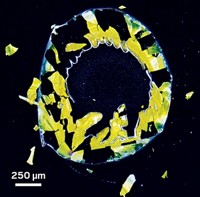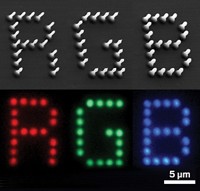Advertisement
Grab your lab coat. Let's get started
Welcome!
Welcome!
Create an account below to get 6 C&EN articles per month, receive newsletters and more - all free.
It seems this is your first time logging in online. Please enter the following information to continue.
As an ACS member you automatically get access to this site. All we need is few more details to create your reading experience.
Not you? Sign in with a different account.
Not you? Sign in with a different account.
ERROR 1
ERROR 1
ERROR 2
ERROR 2
ERROR 2
ERROR 2
ERROR 2
Password and Confirm password must match.
If you have an ACS member number, please enter it here so we can link this account to your membership. (optional)
ERROR 2
ACS values your privacy. By submitting your information, you are gaining access to C&EN and subscribing to our weekly newsletter. We use the information you provide to make your reading experience better, and we will never sell your data to third party members.
Materials
Chemistry In Pictures
Chemistry in Pictures: Crystal dahlia
by Alexandra Taylor
February 14, 2019

This spiky cluster of SrCuSi4O10 crystals resembles a late-summer blossom or a close-up of a viral particle. To make the crystals, Darrah Johnson-McDaniel at the University of Georgia heated sources of copper and strontium with a silicate precursor in water. Eric Formo, laboratory manager at the Georgia Electron Microscopy facility, imaged the crystals. Formo says Johnson-McDaniel, could have made different structures by altering the temperature and pressure. Johnson-McDaniel’s group uses this hydrothermal method to tune the crystals’ size and shape to match them with applications such as fingerprint-dusting powders, bioceramics, and roofing materials.
Submitted by Eric Formo
Do science. Take pictures. Win money. Enter our photo contest here.
Related C&EN Content:
CORRECTION: This story was updated on Feb. 15, 2019, to clarify that Darrah Johnson-McDaniel created the sample and Eric Formo imaged it.





Join the conversation
Contact the reporter
Submit a Letter to the Editor for publication
Engage with us on Twitter